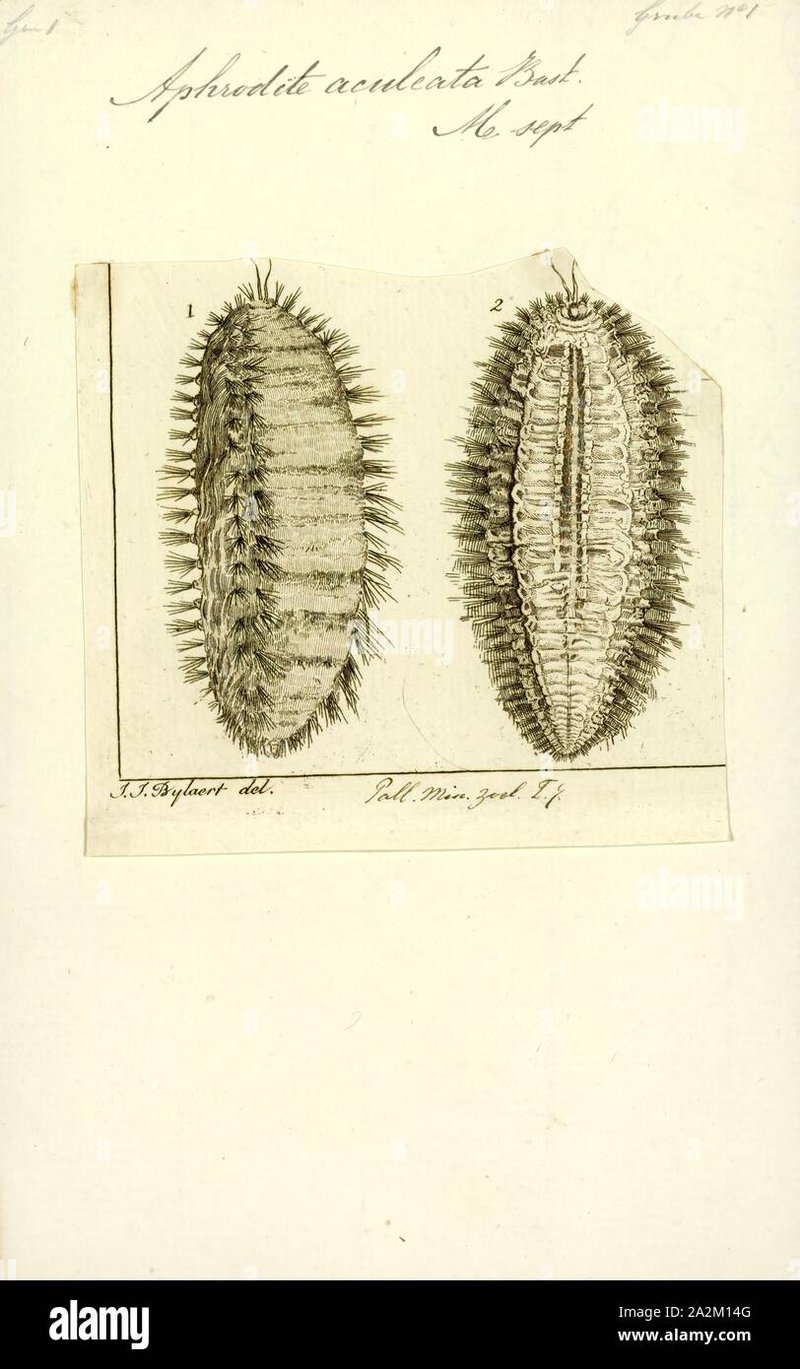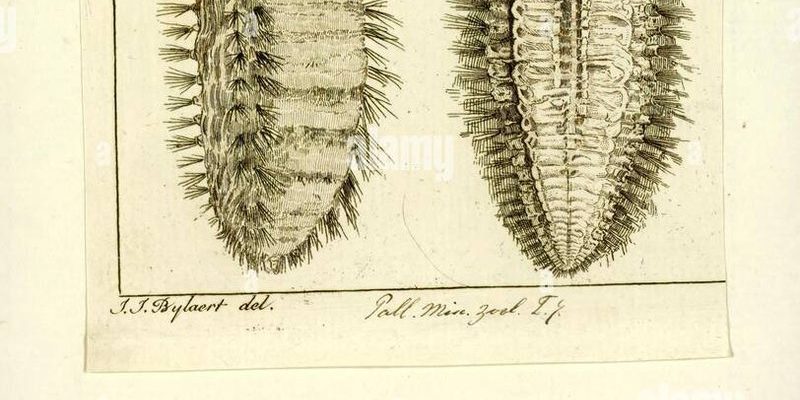
So, how does this little marine worm manage to eat in such a unique way? Let’s dive into its feeding mechanism step-by-step. I’ll guide you through the intricacies of how it works, all while keeping it straightforward and easy to digest.
Understanding the Anatomy of Aphrodite Aculeata
To grasp how the Aphrodite aculeata feeds, we first need to appreciate its anatomy. This worm, often referred to as the “sea mouse,” sports a segmented body covered with bristle-like structures called chaetae. These chaetae aren’t just for show; they play a crucial role in locomotion and stabilization while feeding. The body’s unique structure allows it to burrow through sediment, where it finds its primary food source.
The head of the Aphrodite aculeata is equipped with specialized feeding appendages called parapodia. These appendages help the worm grab and manipulate food particles in its environment. The head region also features a mouth that’s perfectly designed for its feeding habits. By understanding these anatomical features, you can better visualize how this creature interacts with its surroundings to find food.
Honestly, it’s incredible how evolution has fine-tuned the Aphrodite aculeata’s body for survival. It’s like nature’s own engineering masterpiece, specially designed to thrive in various marine habitats.
How the Feeding Mechanism Works
Now that we’ve touched on its anatomy, let’s move on to the exciting part: how does the Aphrodite aculeata actually feed? The feeding mechanism can be broken down into several steps, which allows it to effectively consume food in its ocean habitat.
1. Searching for Food: Aphrodite aculeata typically resides in sandy or muddy ocean floors, where it can easily access organic matter and detritus.
2. Creating a Feeding Current: When it’s time to eat, the worm uses its parapodia to push water through its body. This movement helps to create a current that draws in water rich in food particles.
3. Capturing Food: As the water rushes in, the worm uses its chaetae to trap small organisms like plankton and organic debris, effectively filtering out the nutrients it needs.
4. Ingestion: After capturing the food, the Aphrodite aculeata uses its mouth to ingest the particles. The mouth is equipped with small, tooth-like structures that aid in grinding up the food, making it easier to digest.
This intricate mechanism not only showcases the beauty of nature’s design but also underlines the Aphrodite aculeata’s role in nutrient recycling within the marine ecosystem. It’s like an underwater recycling system that helps keep the ocean floor healthy.
The Importance of Diet for Aphrodite Aculeata
Aphrodite aculeata feeds on a variety of organic matter found in its environment. This diet mainly consists of:
- Microalgae
- Detritus (dead organic material)
- Small zooplankton
- Bacteria
Having a diverse diet is crucial for the Aphrodite aculeata because it allows the worm to thrive in different marine conditions. Different food sources provide various nutrients that support its growth and reproduction. Without these nutrients, the worm would struggle to survive and fulfill its role in the ecosystem.
You might be wondering why this matters. Well, healthy populations of Aphrodite aculeata contribute to the overall health of marine ecosystems. They help break down organic matter, helping recycle nutrients and creating a balanced habitat for other marine organisms.
Feeding Behavior and Adaptations
The feeding behavior of the Aphrodite aculeata is fascinating, particularly its adaptations to different environments. This worm can change its feeding strategy based on what’s available. For instance, if there’s an abundance of detritus, it may spend more time filtering and ingesting this organic material.
Additionally, these worms have adapted to feed during different times of the day. They may become more active at night to avoid predators while still finding enough food. This flexibility allows the Aphrodite aculeata to maximize its feeding opportunities.
It’s interesting to note that the environment’s conditions can affect how efficiently it feeds. Factors like water current, sediment type, and available food sources all play a significant role in its feeding success.
Why Understanding the Feeding Mechanism Matters
You might ask, “Why should I care about how Aphrodite aculeata feeds?” Well, understanding its feeding mechanism is key to appreciating marine ecosystems as a whole. Each organism plays a unique role, and the Aphrodite aculeata is no exception.
The health of marine environments relies on efficient nutrient cycling, and creatures like the Aphrodite aculeata contribute significantly to this process. By feeding on organic matter, they help decompose it and release essential nutrients back into the ecosystem, fostering the growth of other marine life.
Furthermore, studying these feeding mechanisms can help scientists monitor environmental changes. If the food supply in an area decreases, it may indicate larger ecological issues at play. Thus, understanding the feeding habits of Aphrodite aculeata helps researchers gauge the health of marine environments.
In a nutshell, the feeding mechanism of Aphrodite aculeata is a remarkable example of nature’s ingenuity. From its specialized anatomy to its efficient feeding process, this little worm plays a crucial role in its ecosystem. By understanding how it feeds, we gain insight into the delicate balance of marine life and the importance of every organism within it.
Next time you think about ocean creatures, remember the Aphrodite aculeata. It may be small, but its impact on marine ecosystems is anything but insignificant. By appreciating these underwater wonders, we can work toward protecting our oceans and all the fascinating life they harbor.

